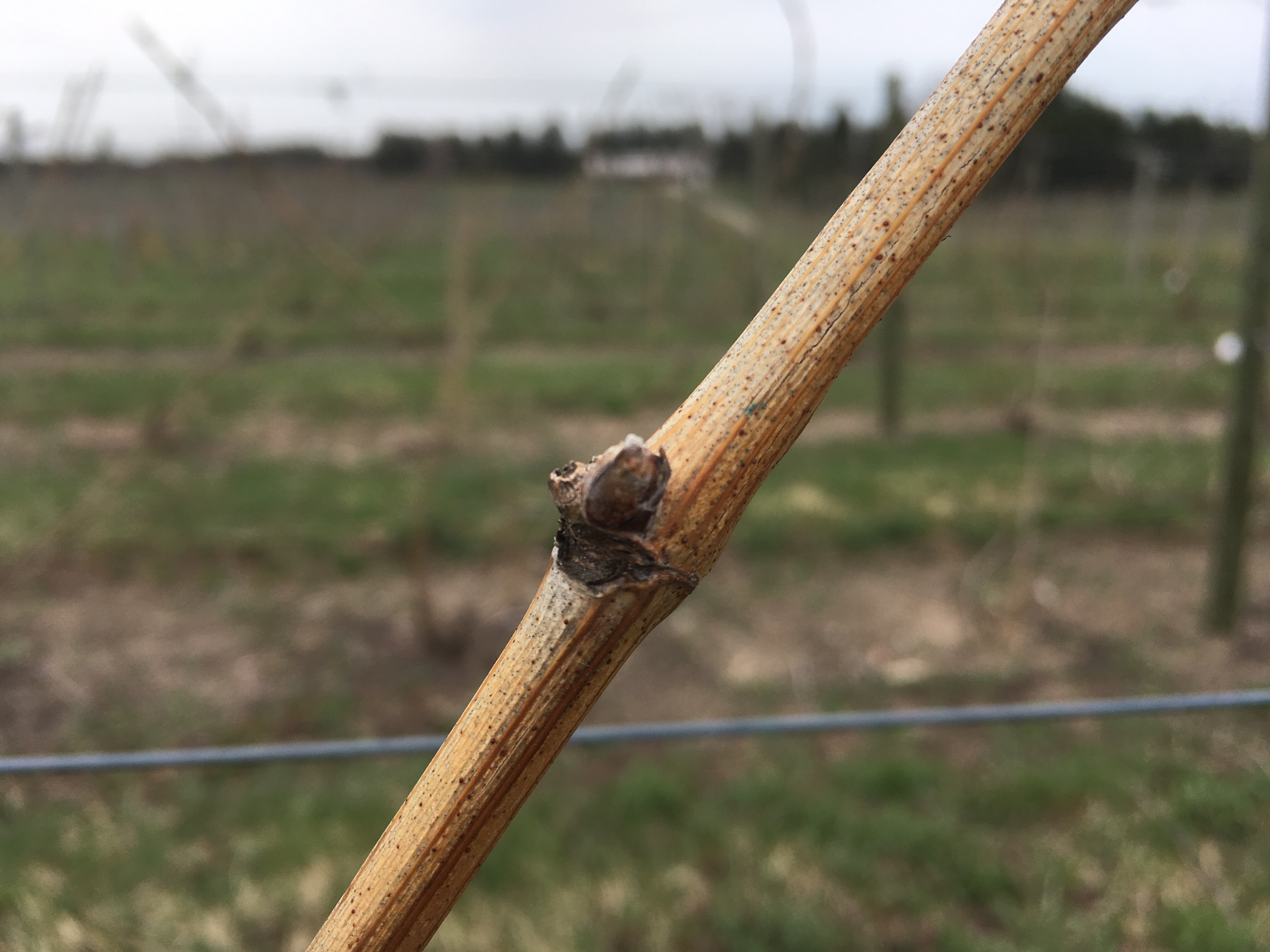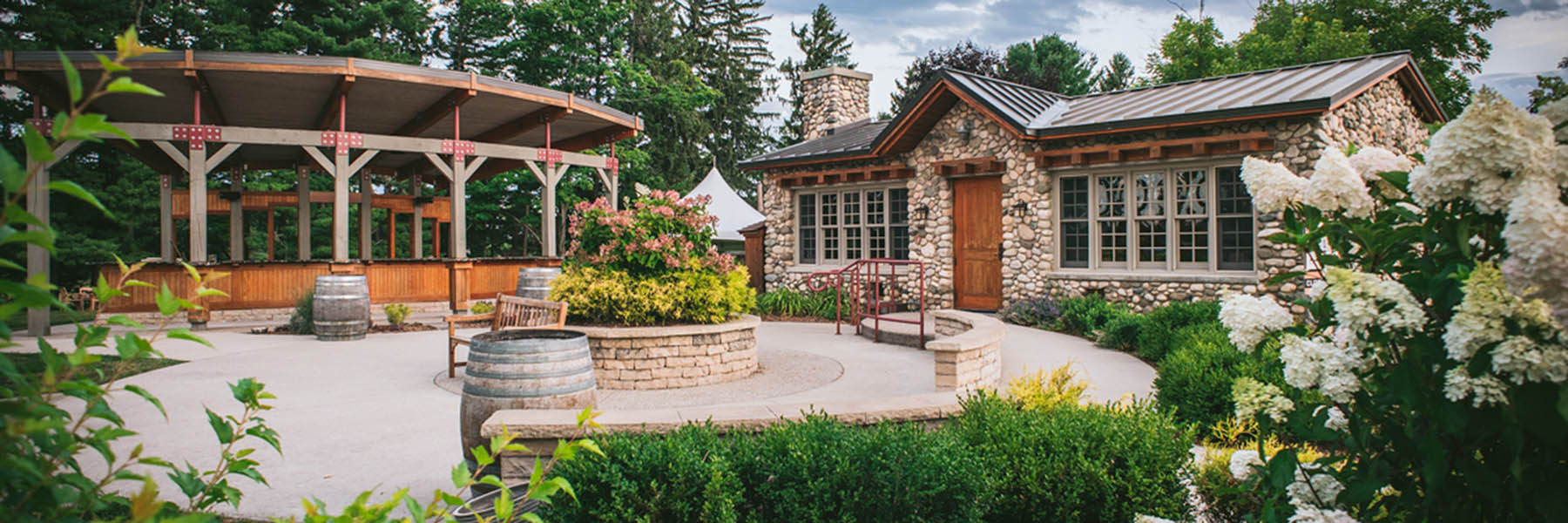Wednesday April 20, 2016

Life in the vineyard is just beginning to show itself.
Winter has broken and we enjoyed some lovely early spring weather the first several weeks of March. Then spring reverted back to winter, because that’s just what happens in Northern Michigan. We have been pruning through the weather shifts and are poised to enjoy some more spring weather soon. A question that is on every vineyard manager’s mind this time of year, other than what the weather will do next, is that of buds. How many buds should I leave for this or that variety? How many buds may have succumb to a harsh winter’s injury? A grapevine’s buds are fairly unique. The amount we leave behind after pruning help control what size of crop you set and ultimately harvest, can affect the vigor of the shoots that grow that year, and can play a role in the density of the canopy- which is an important factor to monitor in our region.
First, we need to understand a grapevine’s unique characteristics on a singular level. As with many woody perennials, the buds that will sprout new growth this year were actually formed last year. With grapes this usually occurs mid-summer, July through August. The shoot tips, the first several leaves, and even the flower clusters that will turn into fruit have already been formed, on a microscopic level, inside that little bud. What makes a grapevine particularly special is that it forms compound buds. Compound buds appear to be one bud on the outside, but within the bud scales there lies the primary, secondary, and tertiary bud. So that’s a three for the price of one, a threefer! The primary bud is the most cold sensitive, and the first to go in a bad winter, followed by the secondary and tertiary in order of cold hardiness. The primary bud is usually the only one to sprout if the vine experienced no winter injury, and is also responsible for expressing the full fruiting potential of the vine that year. Think of the secondary and tertiary buds as insurance plans for the vine, they contain a reduced crop or no crop, respectively, but offer the vine a way to grow and survive and form fruitful buds for the following year.
So now that you know more about a vine’s buds on a singular level. Let’s take a quick look at buds from a viticultural standpoint. The number of buds for the most part determines the number of shoots that will grow, which for the most part determines how many clusters of fruit that will be produced. I am omitting several other factors here, the size and weight of the clusters can vary from year to year, and weather during pollination is very important, etc., etc. We are just talking about buds today. However, if I leave two eight node canes vs. two ten node canes, I can expect to get roughly 25% more fruit on the ten node cane. Now, with farming, the math is almost never that clean, but the buds/vine left behind after pruning gives a vineyard manager a tool to use to adjust the amount of shoots and fruit a vine can produce in a season.
-Andy Fles

Vineyard Manager - Shady Lane Cellars


